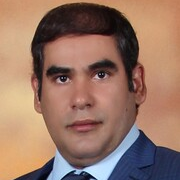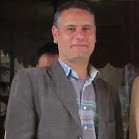PRISMA Hyperspectral Remote Sensing Data for Geological Mapping and Environmental Monitoring: Applications, Challenges, Advanced Image Processing and Machine Learning Techniques
A special issue of Remote Sensing (ISSN 2072-4292). This special issue belongs to the section "Environmental Remote Sensing".
Deadline for manuscript submissions: 31 August 2024 | Viewed by 1027
Special Issue Editors
2. Geoscience and Digital Earth Centre (INSTeG), Research Institute for Sustainable Environment, Universiti Teknologi Malaysia, Johor Bahru 81310, Malaysia
Interests: remote sensing; environment; satellite image processing; geological mapping; minerals; exploration geology; mining; exploration geophysics
Special Issues, Collections and Topics in MDPI journals
Interests: geological remote sensing; exploration geology; mining; exploration geophysics; image processing
Interests: digital image processing; environmental monitoring; image classification; multispectral and radar satellite data applications
Special Issues, Collections and Topics in MDPI journals
Interests: mineralogy, economic geology; mineral exploration; remote sensing; structural geology, geochronology
Special Issues, Collections and Topics in MDPI journals
Special Issue Information
Dear Colleagues,
Space-borne hyperspectral imagery provides a sophisticated and modernized dataset for geological applications and environmental monitoring. In recent years, numerous investigations have been carried out in the field of hyperspectral remote sensing. PRecursore IperSpettrale della Missione Applicativa (PRISMA), a satellite of the Italian Space Agency, was launched in June 2019. It carries a hyperspectral sensor that records a continuum of spectral bands in the range of the visible near-infrared (VNIR) and the short-wave infrared (SWIR), from 400 to 2500 nm, with a spatial resolution of 30 m. PRISMA hyperspectral data were released for free usage. PRISMA hyperspectral imagery has great potential to be utilized within a variety of applications for addressing geology and environmental issues. Despite the fact that PRISMA hyperspectral imagery has gained the scientific interest of the remote sensing communities due to geological mapping and environmental issues, it is still in the initial stages. Several advanced image processing algorithms can be implemented to extract spectral and spatial information from the PRISMA hyperspectral datasets. Nowadays, the fusion of extracted information using machine learning techniques is evolving gradually and is fundamental for unravelling numerous image processing challenges for geological and environmental mapping.
This Special Issue is focused on the recent developments in the applications of PRISMA hyperspectral imagery within geological applications and environmental monitoring. We are interested in applications, innovative solutions to challenges in image processing, the execution of advanced image processing algorithms, and machine learning for data fusion. Manuscript submissions are encouraged that focus on a broad range of related geological and environmental themes. Researchers are encouraged to submit innovative research or case studies that may include, but are not limited to, the following topics:
- Hydrothermal alteration mineral mapping for ore exploration;
- Porphyry copper/gold prospecting;
- Development and analysis of spectral mapping algorithms;
- New pixel- and sub-pixel-based image analysis techniques;
- Environmental monitoring of geo-hazards;
- Detecting toxic pollution related to mine excavation, mine tailing, mine waste, and acid runoff;
- Recent advances in remote sensing information fusion for mineral prospectivity mapping (MPM);
- Real-world case studies of mineral prospecting in inaccessible regions using PRISMA hyperspectral imagery;
- Geothermal potential mapping;
- GIS and PRISMA hyperspectral imagery integration for mineral exploration modelling;
- Integration of multispectral and PRISMA hyperspectral data for geological mapping and environmental modelling;
- Recent advances in multisource remote sensing information fusion for mineral exploration;
- Machine learning techniques for fusing PRISMA hyperspectral data with geophysical, geological, and geochemical data.
Dr. Amin Beiranvand Pour
Prof. Dr. Hojjatollah Ranjbar
Prof. Dr. Mazlan Hashim
Prof. Dr. Basem Zoheir
Guest Editors
Manuscript Submission Information
Manuscripts should be submitted online at www.mdpi.com by registering and logging in to this website. Once you are registered, click here to go to the submission form. Manuscripts can be submitted until the deadline. All submissions that pass pre-check are peer-reviewed. Accepted papers will be published continuously in the journal (as soon as accepted) and will be listed together on the special issue website. Research articles, review articles as well as short communications are invited. For planned papers, a title and short abstract (about 100 words) can be sent to the Editorial Office for announcement on this website.
Submitted manuscripts should not have been published previously, nor be under consideration for publication elsewhere (except conference proceedings papers). All manuscripts are thoroughly refereed through a single-blind peer-review process. A guide for authors and other relevant information for submission of manuscripts is available on the Instructions for Authors page. Remote Sensing is an international peer-reviewed open access semimonthly journal published by MDPI.
Please visit the Instructions for Authors page before submitting a manuscript. The Article Processing Charge (APC) for publication in this open access journal is 2700 CHF (Swiss Francs). Submitted papers should be well formatted and use good English. Authors may use MDPI's English editing service prior to publication or during author revisions.
Keywords
- PRISMA
- hyperspectral datasets
- alteration mineral mapping
- machine learning techniques
- geological mapping
- environmental issues
- ore mineral exploration
- spectral mapping algorithms
- earth observations
- geo-hazard monitoring








